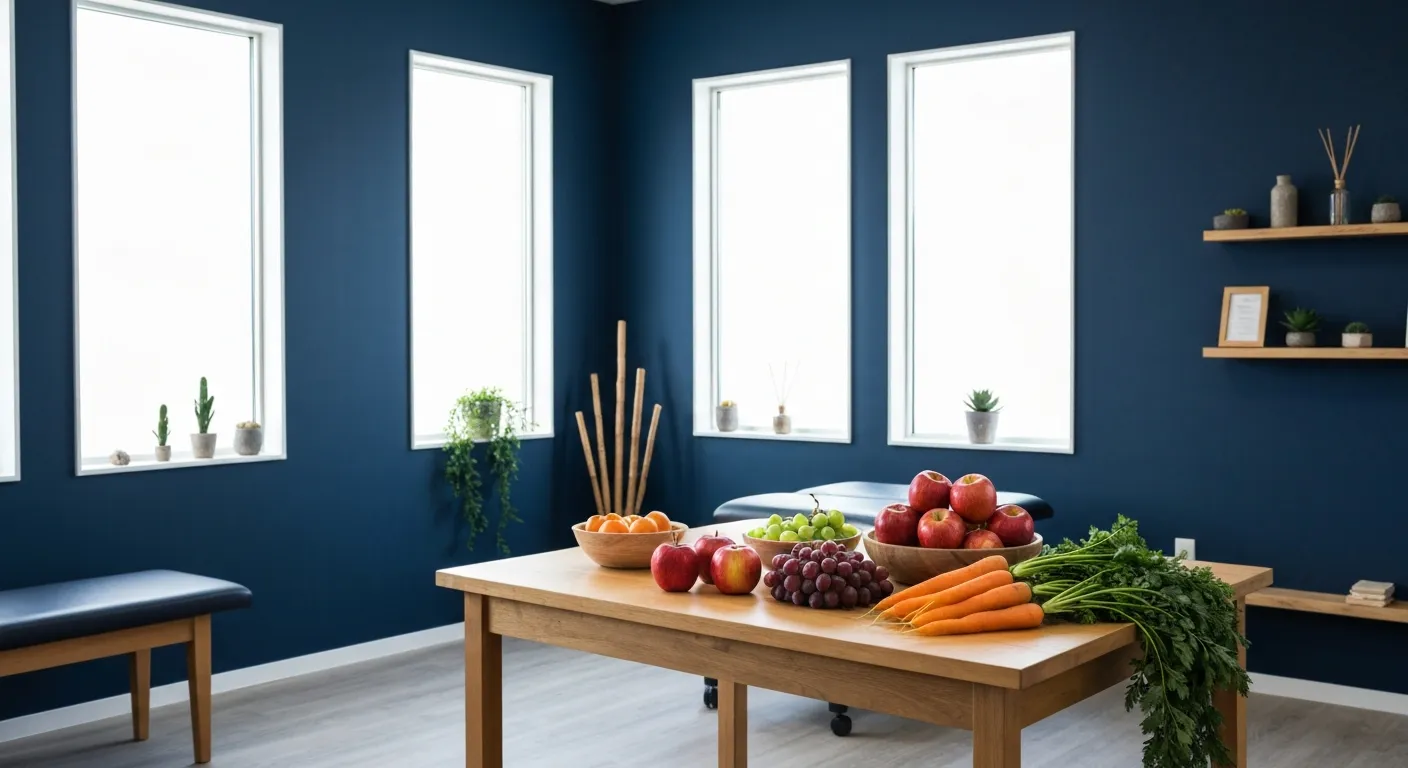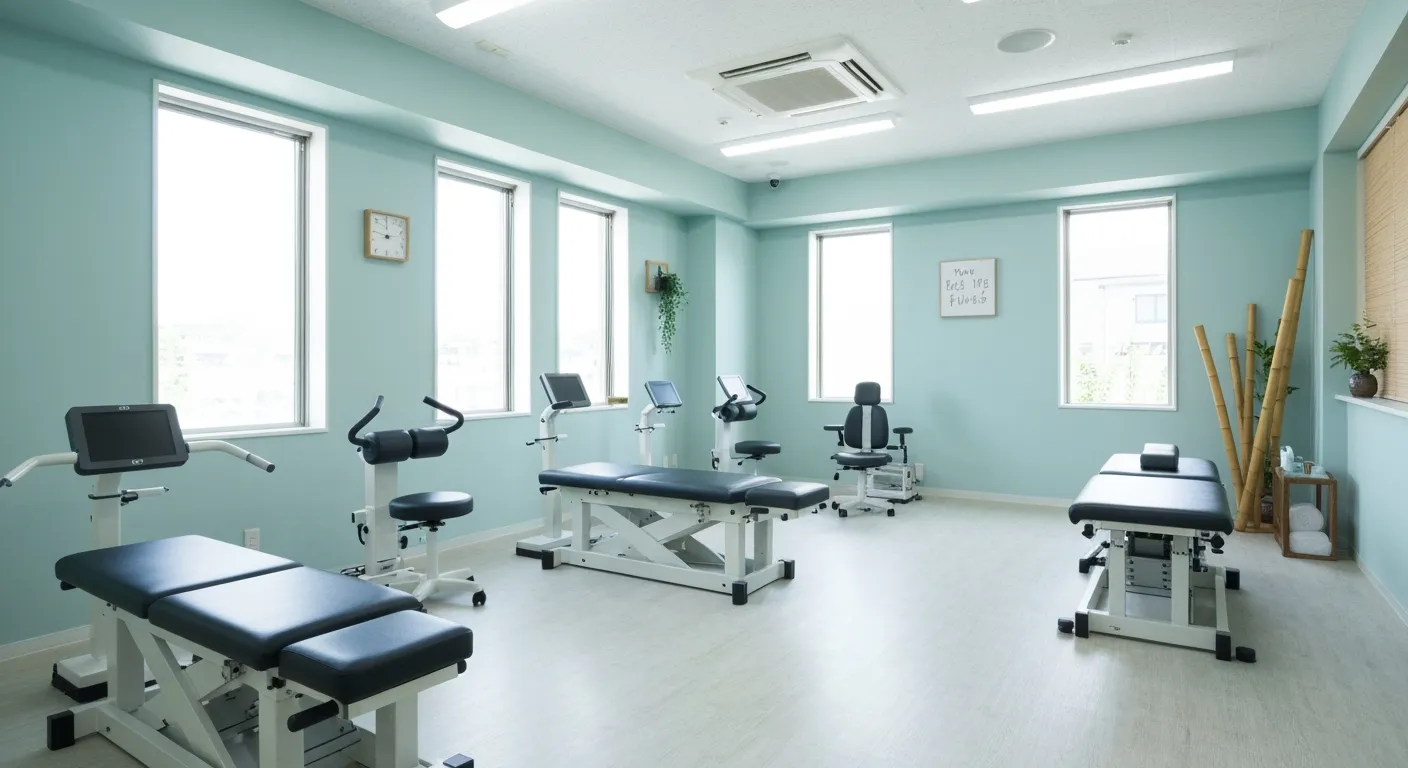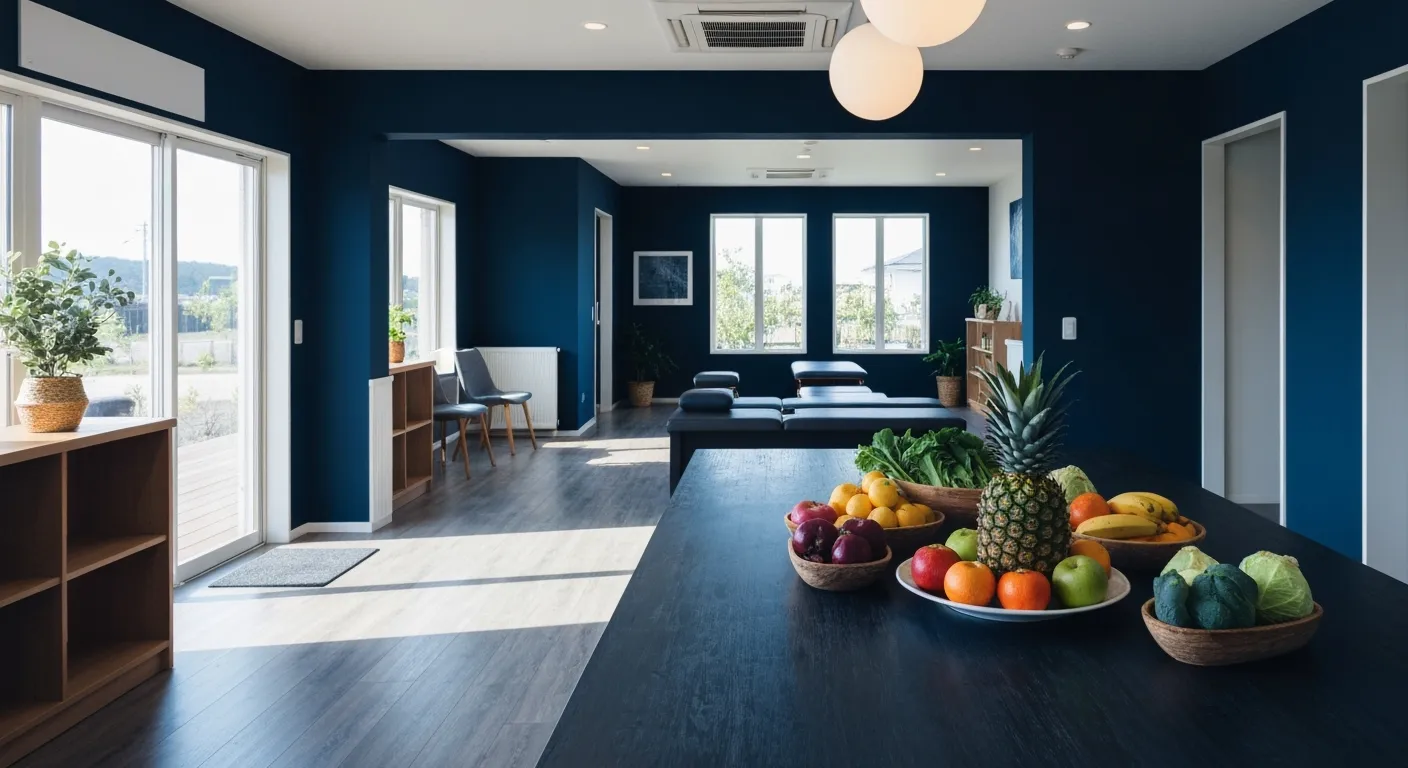The Importance of Root Cause Analysis in Effective Pain Management
October 9, 2025
13 min

Understanding the Critical Role of Root Cause Analysis in Pain Management
Pain is one of the most complex medical challenges, often serving as a warning signal for underlying health issues rather than merely a symptom to be suppressed. Effective pain management requires looking beyond immediate symptoms to uncover and address the fundamental causes of pain. Root Cause Analysis (RCA) is a systematic, multidisciplinary approach that enables healthcare professionals to identify these underlying factors, thereby fostering long-term relief, enhancing patient safety, and improving overall healthcare outcomes. This article explores how RCA transforms pain management through rigorous investigation, collaborative strategies, and holistic care, emphasizing its significance in sustainable, personalized pain treatment.
What Is Root Cause Analysis and Its Importance in Pain Management?

What is root cause analysis (RCA) and why is it important in improving pain management?
Root cause analysis (RCA) is a systematic method used in healthcare to identify the fundamental causes of problems or adverse events, going beyond immediate symptoms to uncover underlying systemic issues. In the context of pain management, RCA plays a vital role because it enables clinicians to determine the true sources of pain, which often involve complex factors such as inflammation, nerve sensitivity, muscle imbalances, or lifestyle influences, rather than just surface-level pain signals (Determining the Root Cause of Pain).
By thoroughly analyzing these root causes, healthcare providers can craft targeted treatment strategies that address the core issues, leading to more sustainable and long-term relief (The Importance of Identifying the Root Cause of Pain for Long-Term Relief). This approach minimizes the cycle of temporary symptom control and helps prevent recurrence of pain. Additionally, RCA involves examining system-level factors—such as communication gaps among caregivers, procedural errors, or organizational flaws—that might contribute to ineffective pain management outcomes (Root Cause Analysis in Healthcare).
The integration of RCA into pain management enhances overall patient safety by reducing the likelihood of misdiagnosis or ineffective interventions. It fosters a personalized approach, whereby treatment plans are tailored to the specific underlying causes identified through the analysis. Ultimately, employing RCA supports the development of more effective, comprehensive pain treatment strategies (Treating the Root Cause of Pain) that improve quality of life and reduce dependency on medications, aligning with best practices for long-term pain relief (Pain and Pain Management - Adults).
Analyzing Causes of Pain: The Key to Improved Treatment Outcomes and Healthcare Quality

Why is analyzing the causes of pain essential for improving treatment outcomes and healthcare quality?
Analyzing the causes of pain is fundamental to achieving better treatment results and enhancing healthcare quality. This process allows healthcare providers to move beyond simply relieving symptoms and instead focus on identifying the root cause of pain. When clinicians pinpoint root causes—such as muscle imbalances, nerve damage, or emotional stress—they can develop targeted, personalized treatment plans tailored to each patient’s unique condition.
Such detailed cause analysis leads to more effective and sustainable interventions, reducing reliance on temporary solutions like medications alone. It also minimizes the risks of unnecessary treatments that may not resolve the core issue. Moreover, understanding the specific nature and classification of the pain—whether nociceptive, neuropathic, or centrally mediated—guides clinicians in choosing appropriate therapies, whether physical, psychological, or combined approaches (Pain Management Overview).
Accurate assessment of pain causes not only improves individual outcomes but also promotes high-quality healthcare by enabling better measurement of treatment efficacy. Reliable outcome measures stem from precise diagnosis, which ensures that improvements are meaningful and sustained. Consequently, a systematic approach to cause analysis fosters holistic, patient-centered care, reducing recurrence and improving overall healthcare system performance (Root Cause Analysis in Healthcare).
Methods and Strategies Employed in Root Cause Analysis for Pain Management

In healthcare settings, methodologies such as the Five Whys technique, Fishbone (Ishikawa) diagrams, fault tree analysis, and models like the Swiss Cheese Model are employed to systematically analyze the root causes of pain management issues. These strategies involve comprehensive data collection through patient history, physical examinations, diagnostic imaging, and laboratory tests to identify underlying physiological, psychological, or environmental factors contributing to persistent or unrelieved pain.
Root Cause Analysis (RCA) emphasizes examining system-level influences—including communication pathways, staffing adequacy, equipment reliability, and organizational processes—to uncover systemic lapses rather than attributing faults solely to individual clinicians. This approach promotes a broader understanding of factors that may lead to ineffective pain control.
Interprofessional collaboration plays a crucial role in the RCA process. Teams consisting of physicians, nurses, therapists, and other healthcare professionals evaluate collected data, identify causal factors, and develop targeted corrective actions aimed at addressing underlying causes. The goal is to implement systemic changes that foster safer, more effective pain management practices.
The procedures for conducting RCA related to pain include steps like describing what happened, gathering detailed data, analyzing causal relationships through tools such as the Fishbone diagram or the Five Whys, and identifying latent systemic flaws. This structured analysis leads to the development of interventions such as process improvements, staff education, or organizational policy updates.
Utilizing these systematic RCA strategies in pain management not only helps in preventing recurrence of issues but also enhances patient safety and outcomes. It encourages a comprehensive, patient-centered approach that integrates process improvement with individualized patient care, ultimately fostering more sustainable pain relief solutions.
How Root Cause Analysis Facilitates Long-Term Relief by Identifying Underlying Pain Causes

How does root cause analysis help identify the underlying causes of pain to achieve long-term relief?
Root cause analysis (RCA) plays a vital role in uncovering the core sources of pain by conducting a thorough, structured examination of various contributing factors. It takes into account physiological, psychological, and environmental influences that shape a patient’s experience of pain (importance of pain root cause analysis, RCA in healthcare).
Physiologically, RCA involves detailed assessments such as complete medical histories, physical examinations, and diagnostic tools like imaging studies (X-rays, MRI, CT scans) and laboratory tests. These tools help to identify structural issues, nerve damage, inflammation, or biochemical imbalances underlying pain syndromes (medical history in pain diagnosis, diagnostic imaging in pain diagnosis, diagnostic tests for pain).
Psychologically, understanding emotional stress, mental health status, and past trauma is crucial, as these factors can amplify or perpetuate pain sensations (psychological and social factors in pain, psychotherapy in pain management).
Environmental factors such as posture, activity levels, occupational hazards, and lifestyle habits are also evaluated, as they can contribute significantly to chronic pain conditions (role of posture and muscle imbalances in pain, lifestyle factors affecting chronic pain).
Distinguishing between symptoms and root causes is central to effective RCA. While symptoms are the manifestations of underlying issues, addressing only symptoms provides temporary relief. RCA aims to identify persistent causes like muscle imbalances, poor biomechanics, nerve compressions, or emotional stressors (limitations of symptom-only pain treatment, treating the root cause of pain).
This comprehensive understanding leads to personalized treatment plans targeting the fundamental issues. For example, correcting postural problems, managing emotional stress with therapy, or addressing biochemical imbalances through medication or lifestyle changes (personalized pain treatment approaches, multidisciplinary approaches in chronic pain management).
By focusing on the root causes, RCA promotes sustainable pain relief rather than temporary symptom suppression. It encourages systemic changes in treatment approaches, enabling longer-lasting outcomes and an improved quality of life for patients with complex or chronic pain conditions (long-term benefits of root cause identification, improved quality of life with pain management).
Overall, employing RCA ensures that clinicians target the true origins of pain, facilitating effective, individualized interventions that support long-term relief and functional recovery (root cause analysis for patient safety and pain management, understanding pain complexity and root cause analysis).
Enhancing Patient Safety and Reducing Medical Errors in Pain Treatment through RCA
Root cause analysis (RCA) plays a crucial role in enhancing patient safety by systematically uncovering the underlying systemic factors that contribute to errors in pain management. Often, errors such as medication mistakes, respiratory depression, or diagnostic inaccuracies are not solely due to individual misconduct but stem from deeper process failures like poor communication, environmental hazards, inadequate staffing, or equipment faults (Root Cause Analysis in Healthcare, Hamilton acute pain service safety study).
Using tools like the Swiss Cheese Model, interprofessional teams analyze how multiple vulnerabilities in the healthcare system align, allowing errors to occur. For example, a medication error might result from a failure in communication during handoffs, defective medication labeling, and ineffective monitoring protocols (Root Cause Analysis in Healthcare, Systematic Process of RCA). Identifying these root causes enables targeted, system-based corrective measures—such as implementing standardized protocols, checklists, or technological aids like barcode verification—that directly address the vulnerabilities (Root Cause Analysis (RCA) in Healthcare, Root Cause Analysis in Healthcare).
Evidence shows that after conducting RCA, many healthcare facilities have successfully reduced adverse events and errors. For instance, RCA-led interventions have decreased rates of respiratory depression, surgical mistakes, and pump programming errors in pain management services (Hamilton acute pain service safety study, Impact of root cause analysis on respiratory depression). These improvements reflect the importance of addressing systemic issues rather than focusing solely on individual performance (Effective Root Cause Analysis, Improving Patient Safety with RCA).
Maintaining continuous monitoring and fostering a culture that emphasizes safety over blame are vital for sustained progress. Regular RCA sessions, ongoing staff training, open communication, and leadership support help embed systemic safety practices into routine care. This culture shift encourages transparency, learning, and resilience, ultimately providing safer and more reliable pain treatment (Leadership Role in Error Prevention, RCA for culture of safety in healthcare).
Overall, RCA transforms error prevention from reactive discipline into proactive system strengthening, ensuring long-term safety for patients experiencing pain and optimizing healthcare outcomes (Root Cause Analysis in Healthcare, Root Cause Analysis in Healthcare).
The Role of RCA in Developing Non-Invasive and Non-Pharmacological Pain Management Techniques
Root cause analysis (RCA) plays a vital role in advancing effective, non-invasive, and non-pharmacological approaches to pain management by meticulously uncovering the fundamental factors that contribute to an individual’s pain experience. This systematic process involves evaluating a broad array of potential contributors—biomechanical issues like muscle imbalances, psychological factors such as stress or negative emotions, and systemic problems like healthcare process gaps—that sustain or worsen pain (Root Cause Analysis in Healthcare, Non-pharmacological pain management, pain self-management strategies).
By identifying these underlying causes, clinicians can design tailored interventions that directly target the root issues. For example, if RCA reveals poor posture or movement patterns as a key contributor, physical therapies focusing on biomechanics can be implemented (Treating the root cause of pain, Physical and occupational therapy for pain). Similarly, if psychological stress or emotional factors are predominant, therapies such as cognitive-behavioral therapy, mindfulness, or relaxation techniques can be emphasized (Psychotherapeutic approaches for pain treatment, Mindfulness for pain management).
Effective non-invasive treatments supported by RCA insights include physical therapy, yoga, tai chi, biofeedback, massage, and mind-body techniques like meditation (8 Non-invasive pain relief techniques that really work, Pain management best practices, Non-pharmacological pain management). These strategies often work synergistically, addressing the complex biopsychosocial nature of pain. RCA encourages a multidisciplinary approach, integrating insights across physical, emotional, and systemic domains to develop comprehensive pain relief plans (Multidisciplinary approaches in chronic pain management, Multidisciplinary approach to pain).
The systematic identification of root causes supports a shift away from reliance on medications, reducing risks such as dependency, side effects, and adverse reactions (Pain management options, Understanding the role of root cause analysis in healthcare, Root Cause Analysis and pain management). It promotes sustainable pain management by focusing on addressing the true sources of discomfort, leading to better patient outcomes and long-term wellbeing (Long-term benefits of root cause identification, Pain self-management strategies).
More research into linking RCA practices with the development of non-drug therapies continues to reveal promising avenues for personalized, holistic pain care. By leveraging detailed system analysis, healthcare providers can refine interventions, improve patient satisfaction, and foster safer, more effective strategies that align with the complex, individual nature of pain (The importance of identifying the root cause of pain, Developing an effective root cause analysis).
Improving Diagnosis, Treatment Planning, and Chronic Pain Management through RCA
Root cause analysis (RCA) significantly enhances the process of diagnosing, planning treatment, and managing chronic pain by revealing the intricate causes behind persistent discomfort. Unlike approaches that focus solely on symptoms, RCA seeks to uncover the multifaceted origins of pain, including physiological anomalies, psychological conditions, lifestyle habits, and environmental influences. For instance, underlying factors such as muscle imbalances, poor posture, hormonal imbalances, or emotional stressors are identified through thorough systemic investigation.
This detailed understanding allows healthcare providers to craft personalized treatment strategies that target these specific causes. Instead of relying solely on medications to mask symptoms, clinicians can implement lifestyle modifications, ergonomic adjustments, nutritional therapies, and mental health interventions tailored to the patient’s unique circumstances. The identification of lifestyle or environmental triggers through RCA encourages ongoing monitoring, enabling continuous evaluation and adaptation of management plans.
Such a comprehensive approach not only improves diagnostic accuracy but also fosters long-term relief by addressing root causes directly. It supports a shift from symptom suppression to sustainable health improvements. Furthermore, RCA-driven insights can aid in educating patients about their condition, empowering them to participate actively in their treatment process.
Ultimately, integrating RCA into chronic pain management promotes a systems-based perspective that accounts for the interconnected biological, psychological, and social factors. It facilitates the development of multidimensional plans—combining medication, therapy, lifestyle changes, and emotional support—that evolve with the patient’s needs, leading to more effective, durable pain relief and improved quality of life (source).
More information on the role of root cause analysis in chronic pain diagnosis and treatment can be found by searching the query: "root cause analysis in chronic pain diagnosis and treatment." This approach is increasingly recognized as essential for sophisticated, patient-centered care in complex conditions such as chronic pain.
Supporting Multidisciplinary Collaboration and Best Practices in Pain Management with RCA

Root cause analysis (RCA) plays a vital role in enhancing multidisciplinary approaches to pain management. By offering a structured method to uncover the deep, often complex causes of pain, RCA encourages collaboration among a diverse team of healthcare professionals. This team might include physicians, psychologists, physical therapists, and social workers, all contributing their expertise to form a cohesive understanding of the patient's unique situation.
Through RCA, this collective effort leads to a shared understanding of the physiological, psychological, and environmental factors influencing pain. It facilitates coordinated treatment strategies that integrate insights from different disciplines, moving beyond mere symptom management to address root causes such as lifestyle habits, emotional stress, or systemic healthcare issues.
Importantly, RCA fosters personalized care by revealing individual variations in pain perception and underlying conditions, which allows providers to tailor interventions effectively. This systemic perspective not only improves the quality and sustainability of pain treatments but also helps in reducing fragmentation in care approaches.
In effect, RCA acts as a bridge connecting best practices from various healthcare fields, ensuring long-term, effective pain management outcomes. The process underscores the importance of comprehensive assessment and targeted interventions, aligning multidisciplinary efforts toward reducing reliance on symptomatic treatments and achieving sustainable relief.
The Significance of Addressing Root Causes for Sustainable, Effective Pain Relief
Pain often acts as a warning signal, alerting the body to deeper issues that require attention. While it can result from injuries or medical conditions, persistent pain—especially chronic pain—may not stem solely from visible injuries but can be a manifestation of underlying physiological, psychological, and environmental factors. For example, poor posture, muscle imbalances, emotional stress, or systemic health issues can sustain or amplify pain signals even after the initial injury has healed.
Treating only the symptoms of pain, such as using medications for immediate relief, can pose risks. Symptom-focused approaches often provide temporary alleviation but do not address the root causes of discomfort. This can lead to dependency on medications, side effects, and ongoing pain recurrence. Over time, ignoring the underlying factors may result in worsening health, reduced mobility, and diminished quality of life.
A holistic and personalized evaluation—employing diagnostic tools like imaging, patient histories, and physical examinations—is crucial for uncovering the true sources of pain. Addressing these causes through tailored treatment plans ensures long-term relief and avoids the pitfalls of symptomatic treatment. This comprehensive approach might include lifestyle modifications, physical therapy, psychological support, and lifestyle changes that target the specific underlying issues.
The benefits of focusing on root causes extend beyond pain relief. It can lead to significant improvements in overall health, increased mobility, and better mental well-being. Furthermore, effective management at this fundamental level reduces healthcare costs and minimizes the risk of chronic disability.
By emphasizing the identification and treatment of root causes, healthcare providers help patients achieve sustainable pain management. This approach empowers individuals with knowledge about their condition and encourages active participation in their recovery. Ultimately, addressing fundamental issues not only alleviates pain but also enhances overall quality of life and promotes lasting health and well-being.
Towards a Future of Pain Management Rooted in Comprehensive Understanding
Root Cause Analysis stands as a cornerstone in the evolution of effective pain management. By moving beyond superficial symptom control, RCA empowers healthcare providers to uncover the intricate web of factors contributing to a patient's pain. This methodical approach enhances diagnostic precision, supports multidisciplinary collaboration, and fosters the development of personalized, sustainable treatment plans—both pharmacological and non-pharmacological. Moreover, RCA improves patient safety by addressing systemic vulnerabilities, reducing errors, and promoting a culture of continuous learning and improvement. Embracing RCA in clinical practice not only optimizes pain relief but also elevates the quality of care, ensuring that patients receive holistic and enduring solutions. As healthcare continues to advance, integrating root cause analysis into pain management will be essential for delivering compassionate, effective, and patient-centered care.
Recent articles

Simple Lifestyle Adjustments to Maintain a Healthy Spine

Personalized Nutritional Counseling for Improved Health Outcomes

Exploring Non-Surgical Treatments for Spine-Related Conditions

An Introduction to Spinal Decompression for Sciatica Patients

Transformative Success Stories: Patient Experiences with Chiropractic Treatments

Why Chiropractic Care Is Essential for Back Pain Relief

Addressing Underlying Causes Versus Symptom Management in Pain Care

The Role of Nutrition in Enhancing Chiropractic Treatment Effectiveness

Sciatica Treatment Options: Is Spinal Decompression Right for You?

Lifestyle Tips to Maintain a Healthy Spine and Prevent Back Issues

The Synergy Between Physiotherapy and Chiropractic Treatments

What Happens During Your Initial Chiropractic Consultation

Effective Corrective Exercises for Sustainable Pain Management

Taking a Root Cause Approach to Chronic Pain Management

Holistic Pain Management Techniques Without Surgery

How Patient Success Stories Validate Chiropractic Care Benefits

Spinal Decompression: Innovative Treatment for Sciatic Nerve Pain

Spinal Decompression Therapy: A Non-Invasive Approach to Sciatica Relief

Exploring Holistic Approaches Beyond Surgery for Pain Relief

Practical Lifestyle Advice to Support a Healthy Spine Every Day

Corrective Exercise Routines Designed for Long-Term Pain Prevention

Real Patient Stories: Overcoming Chronic Pain with Chiropractic Care

Lifestyle Changes That Promote a Healthy Spine and Prevent Injury

How Addressing the Root Cause of Pain Leads to Lasting Relief

Non-Surgical Holistic Therapies to Manage Chronic Pain Effectively

Nutritional Counseling's Impact on Physical Health and Healing

Benefits of Regular Chiropractic Care for a Stronger Back

Your First Chiropractic Visit: What to Expect and How to Prepare

Patient Experiences: How Chiropractic Care Transformed Their Lives

Exploring Holistic, Non-Surgical Options for Pain Management

Combining Physiotherapy with Chiropractic Treatments for Enhanced Recovery

Holistic Treatments That Offer Alternatives to Surgery for Pain Relief

Corrective Exercise Strategies for Long-Term Spine Health

How Physiotherapy Complements Chiropractic Adjustments for Better Outcomes

First-Time Chiropractic Visitors: What You Should Know

Understanding the Importance of Treating Pain at Its Source

Adopting Lifestyle Changes to Support Your Spine's Wellness

Utilizing Physiotherapy to Enhance Chiropractic Treatment Outcomes

The Key Advantages of Chiropractic Care for Back Pain Sufferers

Why Focusing on Root Causes Improves Pain Treatment Success

Corrective Exercises That Promote Lasting Pain Relief and Mobility

Sciatica Relief Through Targeted Spinal Decompression Techniques

Preparing for Your First Chiropractic Appointment with Confidence

Healthy Lifestyle Habits for Maintaining Spinal Alignment

Success Stories Highlighting Chiropractic's Role in Pain Recovery

Top Benefits of Chiropractic Care for Chronic Back Pain

Nutrition Tips to Boost Your Overall Wellness and Recovery

How Chiropractic Care Alleviates Back Pain Naturally

How Nutritional Counseling Supports Overall Wellness and Spine Health

Step-by-Step Guide to Your First Visit with a Chiropractor

Using Nutrition to Support Chiropractic and Overall Wellness

Integrating Physiotherapy in Your Chiropractic Healing Journey

How Physiotherapy Complements Chiropractic Adjustments for Faster Healing

Lifestyle Tips for Maintaining a Healthy Spine and Preventing Back Pain

Heartwarming Patient Testimonials Highlighting Chiropractic Success

How Proper Nutrition Supports Chiropractic and Physiotherapy Treatments

Combining Physiotherapy and Chiropractic Treatments for Optimal Recovery

Why Chiropractic Treatments Are Effective for Managing Back Pain

Choosing a Chiropractor: Tips for Finding a Trusted Provider

Integrating Physiotherapy and Chiropractic: Benefits and What to Expect

How Tailored Corrective Exercises Can Aid in Pain Management

Chiropractic Care: A Proven Solution for Alleviating Back Pain

What to Expect at Your First Chiropractic Visit: A Comprehensive Guide

The Importance of Root Cause Analysis in Effective Pain Management

The Role of Corrective Exercises in Sustaining Pain-Free Living

Combining Chiropractic and Physiotherapy for Comprehensive Pain Relief

How Addressing Underlying Causes Improves Pain Treatment Effectiveness

Maintaining Spinal Health Through Lifestyle Changes and Preventive Care

Understanding the Benefits of Chiropractic Adjustments for Back Pain Sufferers

Spinal Decompression Therapy: A New Hope for Sciatica Relief

Lifestyle Recommendations to Support a Healthy Spine and Reduce Pain

Choosing the Right Chiropractor: Key Factors to Consider Before Your First Appointment

Non-Invasive Treatment Alternatives: A Holistic Approach to Pain Relief

Corrective Exercises to Support Long-Term Relief from Chronic Pain

Exploring Non-Surgical Approaches to Spine Health and Wellness

Tips for Daily Habits That Keep Your Spine Strong

Success Stories: How Chiropractic Treatments Changed Lives

Why Focusing on the Root Cause of Pain Leads to Better Outcomes

Nutritional Counseling and Its Impact on Overall Wellness and Recovery

Patient Testimonials That Showcase the Power of Chiropractic Care

Preparing for Your First Chiropractic Appointment: What You Need to Know

Holistic Treatment Options: Beyond Surgery for Pain Relief

Holistic Pain Relief Methods That Avoid Surgery

Nutritional Strategies for Supporting Spine Health and Recovery

First Chiropractic Visit: What Happens and How to Prepare

Chiropractic Patient Success Stories: Inspiring Journeys to Wellness

Effectiveness of Spinal Decompression Therapy in Managing Sciatic Nerve Pain

Addressing Pain at Its Source: Why Treating the Root Cause Matters

Corrective Exercise Programs Designed for Long-Term Pain Prevention

Healthy Lifestyle Advice for Maintaining Spinal Alignment

Understanding Spinal Decompression as a Treatment for Sciatica Pain

Benefits of Chiropractic Care Specifically for Back Pain Relief

Understanding Gait Analysis in Physiotherapy

The Difference Between Muscle Soreness and Dysfunction

Workplace Stress Statistics: How Muscle Tension Impacts Productivity

How Physiotherapy Improves Mobility for Seniors

How to Communicate Pain Levels to Your Therapist Effectively

Physiotherapy Interventions for Balance and Fall Prevention

How Physiotherapy Helps Post-Surgical Recovery

